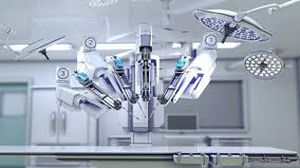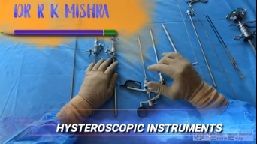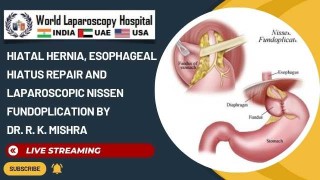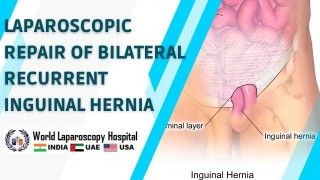Minimally Invasive Umbilical Hernia Repair with Mishra's Knot and Dual Mesh
Add to
Share
1,132 views
Report
1 year ago
Description
Minimally Invasive Umbilical Hernia Repair with Mishra's Knot and Dual Mesh Umbilical hernias, characterized by the protrusion of abdominal contents through the umbilical ring, are common, particularly in infants and adults with increased intra-abdominal pressure. While many small hernias are asymptomatic, they can lead to discomfort, risk of strangulation, or other complications if left untreated. The advent of minimally invasive surgery has revolutionized the approach to these hernias, offering patients quicker recovery, reduced pain, and minimal scarring compared to traditional open surgery. A novel technique for laparoscopic repair of small umbilical hernias involves the use of Mishra's knot and a dual mesh reinforcement system, which provides both strength and flexibility in repairing the defect. This approach combines the benefits of minimally invasive surgery with advanced suturing and mesh techniques to optimize both short-term and long-term outcomes. Key Aspects of the Procedure 1. Laparoscopic Approach Laparoscopy, or minimally invasive surgery, involves the use of small incisions (usually 3-5mm) through which a camera and surgical instruments are inserted. This allows the surgeon to view the hernia site on a monitor, enabling precise dissection, repair, and mesh placement without the need for large incisions. This approach results in less post-operative pain, a lower risk of infection, and quicker recovery times compared to open surgery. 2. Mishra's Knot The Mishra’s knot is a specialized knot-tying technique that offers superior security in the closure of abdominal defects, especially in cases requiring tension-free repairs. This knot is unique in its ability to provide a tight, reliable closure while minimizing the risk of suture slippage or failure. In the context of umbilical hernia repair, the Mishra's knot ensures the precise closure of the hernia sac and reinforces the integrity of the abdominal wall. 3. Dual Mesh Technique The use of a dual mesh system involves the placement of two layers of mesh to strengthen the abdominal wall at the site of the hernia. The inner mesh layer is designed to provide a strong barrier to prevent the recurrence of the hernia, while the outer layer offers additional support and reduces the risk of complications such as seroma or infection. The dual-mesh technique is especially beneficial for small hernias, as it provides an enhanced, durable repair without the need for excessive suturing or tension. Advantages of the Mishra’s Knot and Dual Mesh Approach 1. Reduced Risk of Hernia Recurrence By combining the precise closure offered by the Mishra's knot and the reinforcing strength of dual mesh, this technique reduces the likelihood of hernia recurrence, which is a common concern with traditional repair methods. 2. Faster Recovery and Less Pain The minimally invasive nature of laparoscopic surgery means patients experience less post-operative pain, reduced scarring, and a quicker return to daily activities compared to open surgical procedures. 3. Minimal Complications The use of laparoscopy minimizes the risk of wound infection, seroma formation, and other complications associated with open surgery. The dual-mesh system further decreases the risk of mesh-related issues by offering better integration with the abdominal wall. 4. Cosmetic Benefits With smaller incisions and reduced tissue trauma, patients benefit from better cosmetic outcomes, as the procedure leaves minimal visible scars. Conclusion The minimally invasive laparoscopic repair of small umbilical hernias using Mishra's knot and dual mesh represents an advanced and effective treatment option for patients. This technique not only ensures a high level of precision in the repair process but also enhances the durability of the results, reducing the risk of recurrence and promoting faster recovery. With its minimal invasiveness, excellent cosmetic outcomes, and reduced post-operative discomfort, this method has become an appealing choice for both patients and surgeons alike.
Similar Videos






